BRAIDED HORSE MANES: Why, How-to and Expert Advice
Want to learn all about braided horse manes and create flawless braids for shows, to earn income or just for fun? It’s all possible. This is a definitive guide to braided horse manes that covers why manes are braided, the different types of braids, how to create them and expert advice. Plus, you’ll learn how to get started and succeed at mane braiding.
This post contains affiliate links. If you purchase something from a link, I may receive a small commission at no cost to you. Please see my disclosure for details. I truly appreciate your support!
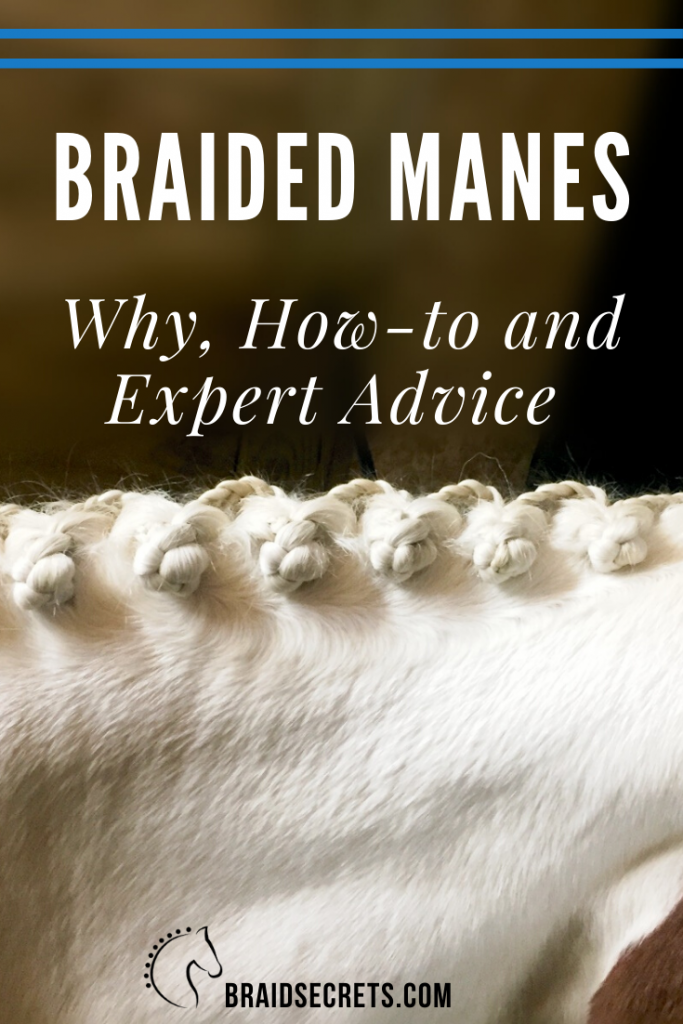
By learning to craft top notch mane braids, I’ve been able to create impressive turn out for shows and earn income braiding horses. I love teaching other equestrians how they can do the same.
Don’t have a knack for braiding? No problem. I went from a novice braider, struggling just to braid my own horse’s mane, to a mane braiding expert. Find out how I did it in my braiding story in just a minute.
If you’re new here, get instant access to my resource library of mane braiding videos and tips for FREE. Enjoy!
Let’s dive into the guide.

CONTENTS
HISTORY OF BRAIDED HORSE MANES
When you braid a horse’s mane, you’re participating in a tradition that started hundreds of years ago. Our relationship with horses has been a key partnership that positively impacted everything from transportation, to food production, and even military battles.
How Horse Mane Braiding Began
The history of equine braiding includes fascinating stories from folklore, to “mane knots” tied by fairies, to a method used to mark a horse for theft. But in most cases braided horse manes were adopted to meet the practical needs of work and war horses. Later, braided manes were completed simply for visual appeal. Mane braids set a noteworthy horse apart from the rest.
Braided Horse Manes Prevented Tangles
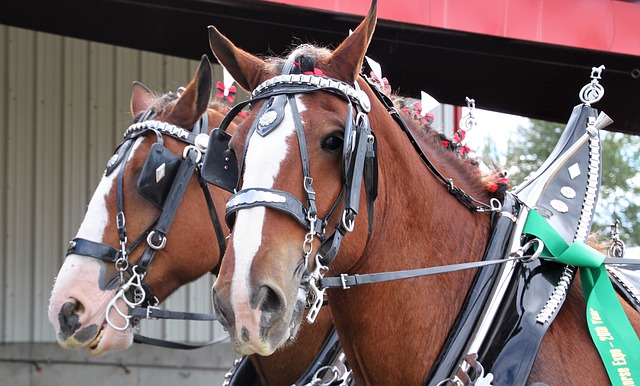
Manes and tails were first braided to prevent tangling in the harness and equipment when a horse was hitched. A braided horse mane prevented entanglement in brush when hunting and improved site lines for riders. Soldiers even employed mane braids to ensure free wielding of their weapons.
Braided Horse Manes Distinguished Well-bred Equines
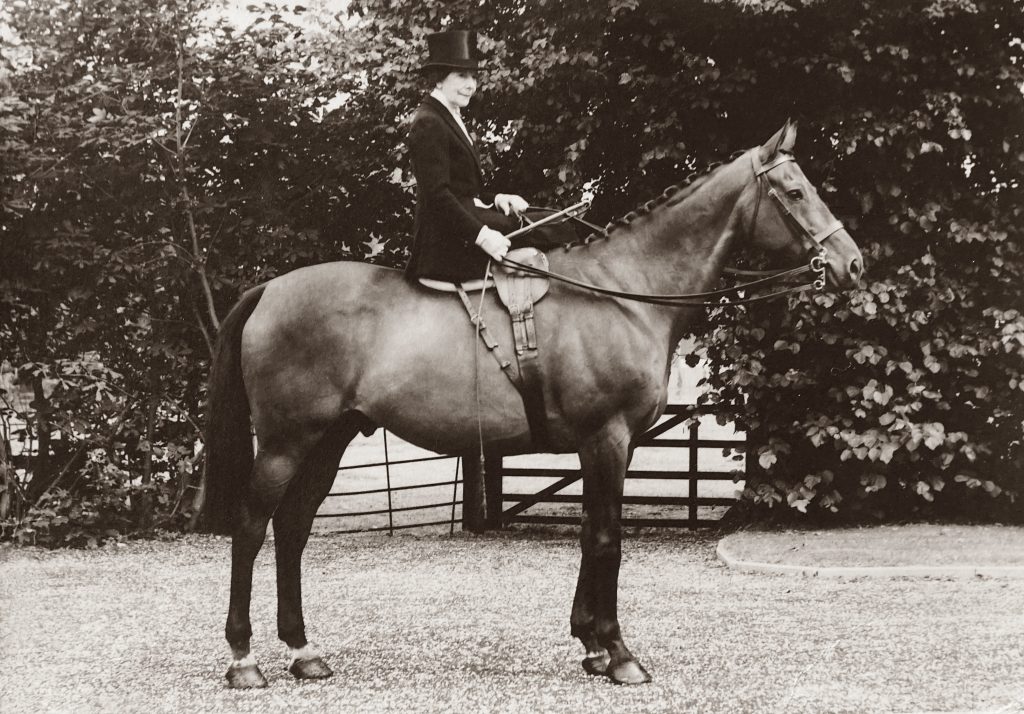
In the early days of hunting, well-bred horses (primarily Thoroughbreds), had their manes braided to distinguished them from the cold-blooded breeds. Thoroughbred racehorses also had their manes braided for events.
As braiding evolved, a braided horse mane became synonymous with excellence. So braided manes were used to identify exceptional horses. It was the significance of a braided horse mane that eventually led to manes being braided for equestrian competitions. And the tradition of mane braiding continues today at prominent shows.
WHY RIDER’S BRAID MANES NOW
Why is it important to learn how to braid your horse’s mane nowadays?
Mane braiding a skill that adds to your horsemanship, allows you to create a favorable first impression on judges and is used to preserve hair for the best care of your horse.
Impressive Show Turn Out
A perfectly braided mane is the cherry on top of an impeccably turned-out show horse in many riding disciplines such as hunters or dressage. Savvy equestrians craft their mane braids to create the illusion of a more perfect conformation. By developing your braiding capability, you add an asset to your horsemanship, especially when horse showing.
But what if you’re not participating in horse shows?
You don’t have to show your horse to find mane braiding useful.
Braided Horse Manes for Preservation & Fun
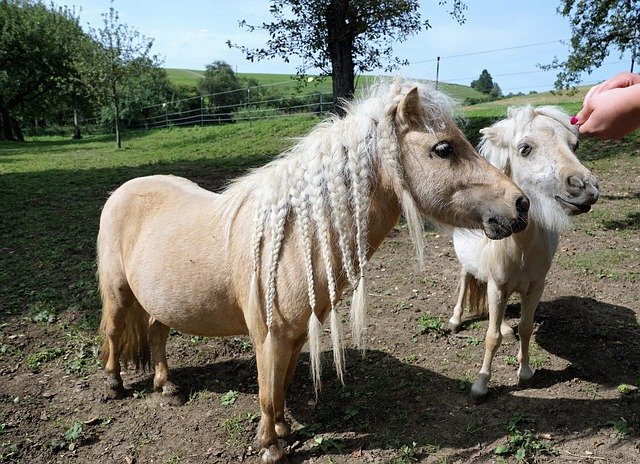
Preservation braids on a long-maned miniature horse.
Equestrians in various riding disciplines use braiding to help preserve long manes and tails and prevent tangles. Different types of braided horse mane patterns are fun to learn for casual riders who enjoy grooming and bonding with their horses.
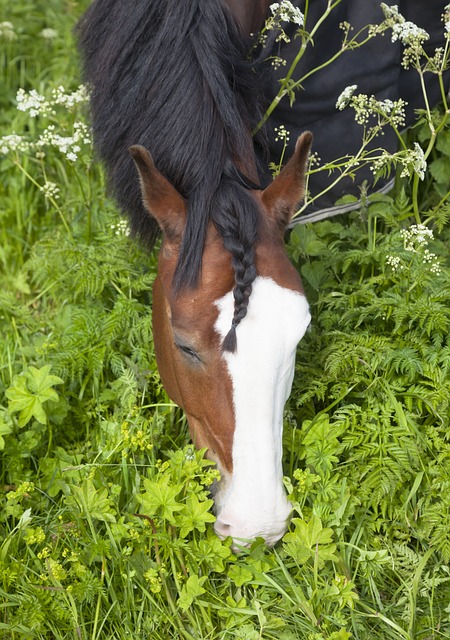
Some riders braid their horse’s mane to preserve the hair or just for fun.
Equestrians sometimes find mane braiding to be a frustrating task due to the messy appearance of their finished braids. But, braiding a mane can go from a frustrating task to a rewarding one with the right knowledge and use of expert techniques. My own braiding journey is a good case in point.
NOVICE-TO-EXPERT BRAIDING STORY
I first learned to braid a mane for a hunter show from a fellow rider at the same barn. She generously shared her braiding knowledge with me which included learning the basic braiding steps. And while the knowledge I acquired from her seemed great at the time, in hindsight, it was very limited.
Mane Braiding Discovery
After learning the basic mane braiding steps for hunter braids and practicing like crazy, here’s what I discovered:
- My messy braids were detracting from my horse’s show turn out.
- Frustration set in when I couldn’t remedy my braiding errors.
- My braiding knowledge was limited, so I didn’t know how the perfect braids I saw on other show horses were achieved.
- I felt like I didn’t have a “knack” for mane braiding.
So I have to confess… I felt defeated when I couldn’t figure out how to improve my braids. And practice alone wasn’t solving the problem. But then came a turning point.
Mane Braiding Game Changer
Everything changed when I met a top professional braider turning out the best mane braids I’d ever seen. Working along side her, I learned the braiding techniques, tips and secrets that transformed my braids from mediocre to magnificent. Check out my dramatic before and after photos below.
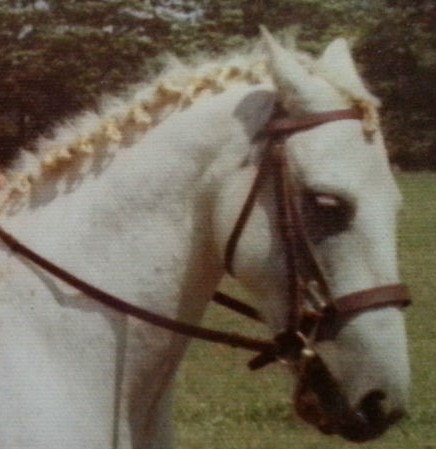
My braids before I learned expert braiding techniques, tips and secrets.
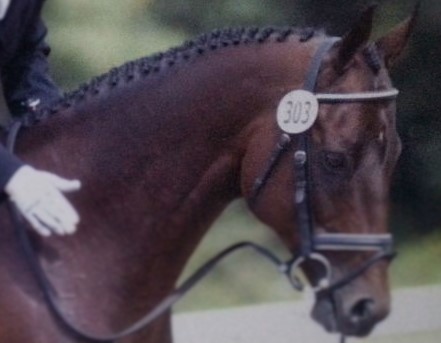
My braids after I got ‘schooled” in mane braiding by a top professional.
With my newly acquired braiding knowledge, I went from struggling to braid a mane to perfecting my braids. And my improved braiding skills allowed me to get paid to braid some of the top show horses in the country.
Mane Braiding Secrets
My novice-to-expert braid transformation is what inspired me to share these mane braiding secrets with fellow equestrians. Now I teach my hard-won braiding knowledge to riders so they can create perfect hunter or dressage braids for successful shows. And since quality braiding is a sought-after skill, riders can use their braiding ability to earn income braiding other horses, if they choose.
Expert Advice: Most riders learn the basic braiding steps, but struggle to produce quality braids. This is because the key to mane braiding is to learn to focus on the few things that really impact your braiding results. This is how you achieve even braid size, spacing, bottom line and a consistent look to your braids across the neck. And that’s what makes your braids stand out in the show ring.
If you’d like a leg up on braiding, get Instant Access to my Free library of mane braiding videos here and snag my monthly expert braiding tips.
WHY BRAID A HORSE’S MANE?
There are several reasons why equestrians will braid a horse’s mane, including to:
- Create impressive show turn out
- Enhance the neck and balance confirmation
- Make a winning first impression on judges
- Prevent tangling or hair breakage
- To train the mane to lay down
- Just for fun – manes are a great medium for designs
BASIC TYPES OF MANE BRAIDS
Most braided horse manes are achieved using either, (1) a foundation of multiple three-strand braids created on short manes that are finished in various ways, or (2) a variation of a basic French braid called a running braid.
For competitions, the three-strand braids are most often completed on a short mane that has been prepared (thinned and shortened to an ideal length) for braiding.
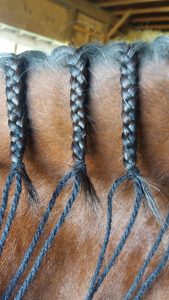
Three-stand braids on a short mane.
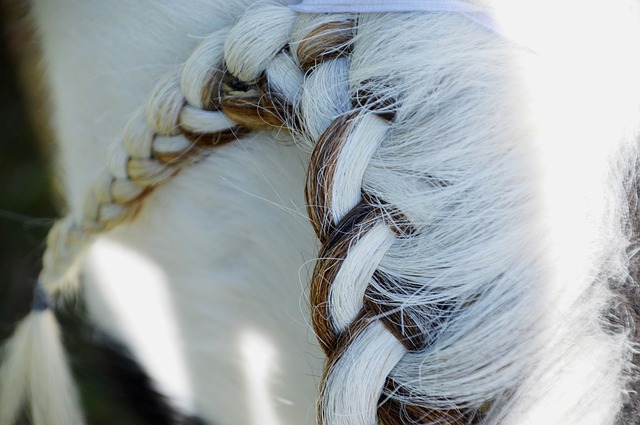
Close up view of a running braid.
Overall, there are more than twenty different types of braids used for various riding disciplines. But how does an equestrian know what mane braids to use when?
In the next section, I’ll show you the types of braids that are used for specific riding discipline or breeds. You’ll learn what braid is appropriate to use when, so you can better understand how to apply them.
BRAIDS BY DISCIPLINE OR BREED
The riding discipline a horse competes in or his breed standard is what determines whether the mane is kept short or long, and if it should be braided and how. This may sound complicated, but the overview and examples below will bring better clarity.
English Hunters

Traditional Hunter Braids
Typical hunters include breeds such thoroughbreds, quarter horses, and warm bloods. For these breeds, the standard requirement is a short mane that is four- to six-inches long and the mane is braided into 30 to 45 hunter braids for rated shows. Hunter braids are created by adding yarn into the individual three-strand braids. The yarn is then used to pull the braids up at the crest. A surgeon’s knot is employed to tie each braid down flat against the neck in a consistent manner.

Hunter manes are unbraided each day and rebraided the following day to help preserve the condition of the mane for the entire show season.
Scallop Braids
Another option for hunter manes are scallop mane braids which are much less common, but acceptable for hunter shows. The scallop braids are constructed of multiple three-strand braids that are looped over to the neighboring braid (giving a scalloped appearance), before the yarn is pulled up through the crest and tied off with a surgeon’s knot.
Forelock Braids for English Hunters
A horses’ forelock is the hair that grows on the forehead. It can be braided in a simple three-strand braid that is turned under, or a fancier French or Dutch braid. A Dutch braid is a raised French braid and is sometimes called a “reverse” French braid.
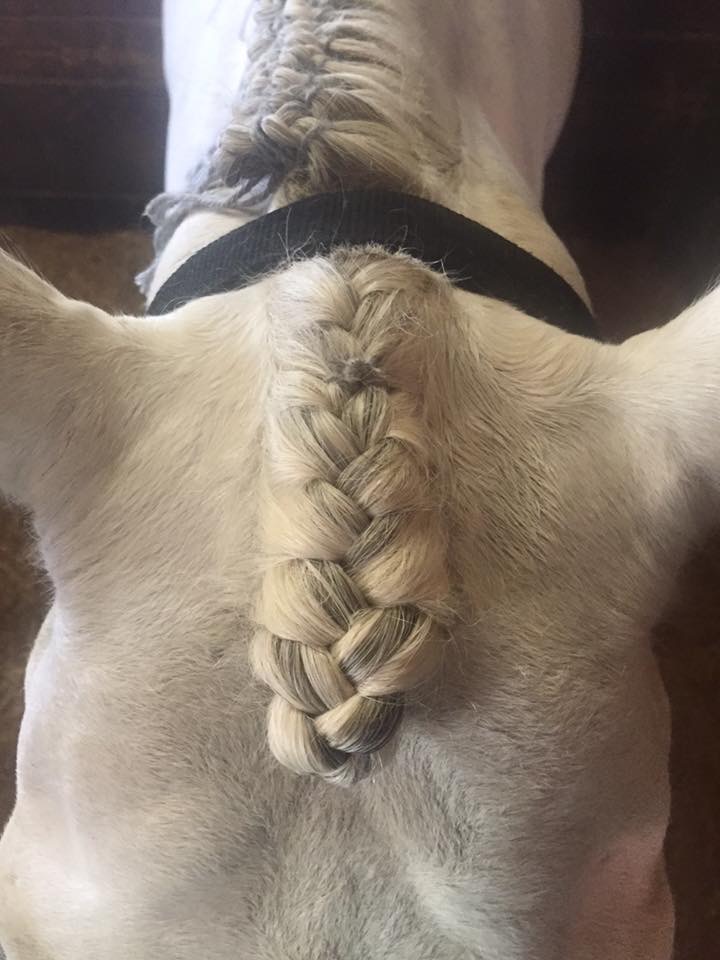
The photo above shows an impressive French-braided forelock. In the show ring, a detailed forelock braid is the crowning jewel of your show turn out for hunters and dressage horses.
Riders often struggle to French braid the forelock. But you can learn the how to create a lovely French-braided forelock in the post titled, Five Secrets for French Braiding the Forelock. The post includes a video tutorial in the Free resource library.
Hunter Tail Braids
Although the focus of this post is braided manes, it’s important to note that show hunters with braided manes may also have their tails French braided for prestigious classes. If a hunter mane is left unbraided, which is more common at schooling shows, the tail alone is never braided.
Eventing
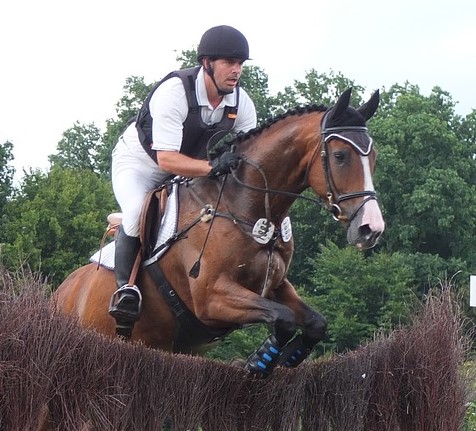
Rosette Braids or Eventing Knots
For eventing horses, rosette braids (also called eventing knots) are created on short manes between four- to six-inches in length (measured after the mane clears the crest). Rosette braids can also be used for jumpers and dressage horses.
To create rosette braids for eventing, 16 to 21 three-strand braids are crafted across the neck with a folded piece of yarn added into the braid and tied off at the bottom with a slip knot (like a hunter braid). Then each braid is wrapped around itself so that you essentially tie it in a knot at the crest. Next, the yarn pieces are pulled up through the crest. Lastly, the yarn pieces are separated and knotted underneath and, if desired, on top of the braid.
Forelock Braids for Eventers
The forelock braid for an eventer can also be formed in the same manner as a rosette braid, or it can be French braided like a hunter.
Eventing Mane Braiding Options
Eventing horses most often have their manes braided for the dressage phase of the competition, so they can also be braided in a similar manner as a dressage horse. This means that the various button braids discussed in the next section are also appropriate turn out for an eventing horse.
Dressage
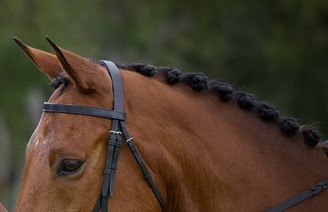
Dressage Button Braids
In dressage, short manes are typical on thoroughbreds, quarter horses, and warm bloods as well. The short manes, five- to six-inch in length, are braided into three-strand braids and folded under to form various types of button braids. Take note that a dressage horse has fewer braids than a hunter, between 9 and 15 braids are common.
You can create button braids with different techniques using elastic bands, yarn or waxed thread. These techniques and various supplies result in braids that accentuate the neck in unique ways based on the braid position on top of (also called Dutch Braids), or next to, the crest of the neck. This allows savvy dressage riders to create the braid type that is most flattering to their horse’s conformation. For example, mane braids that sit on top of the mane give the appearance of added crest height and a better topline.
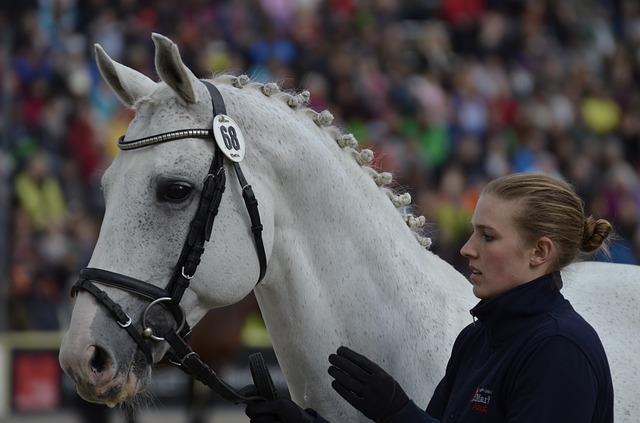
Forelock Braids for Dressage Horses
You can create a simple three-strand forelock braid that is turned under or French braid the forelock of a dressage horse (like a hunter). An unbraided forelock can identify a stallion at a dressage show.

Some horses that participate in dressage shows have a breed standard that requires a long mane. There are different braiding options for long manes which are discussed in the next section.
Long Mane Breed Standards & Braids
Breed standards that require a long, natural mane such as Arabians, Morgans, and Baroque horses [Andalusians, Friesians, and Pura Raza Española (PRE)] are often braided for hunter breed classes (i.e., Arabians) and dressage shows in a running braid, which I’ll cover next. But, as you will discover, there are many types of braids for long manes that can be used.
Expert Advice: When creating a braid on a long mane, have a friend hold your horse’s neck in the same position it will be in when you’re showing for the best finished results.
Running Braid
A running braid is a variation of a French braid with hair added into the braid from the top side of the mane only. This braid is one of the easiest braids to learn and create. Running braids can be crafted close the the crest of the neck or alongside the neck. This braid is frequently used to prevent a long mane from tangling during daily rides.
Running braids have two drawbacks. First, they tend to fall out easier than other types of braids, so they must be completed close to a horse’s show time. Second, running braids have a tendency to buckle at some point along the neck which interrupts the visual flow of the braid from poll to withers. A Dutch braid (discussed next) is a good alternate option since it won’t buckle along the neck.
Dutch or Reverse French Braid
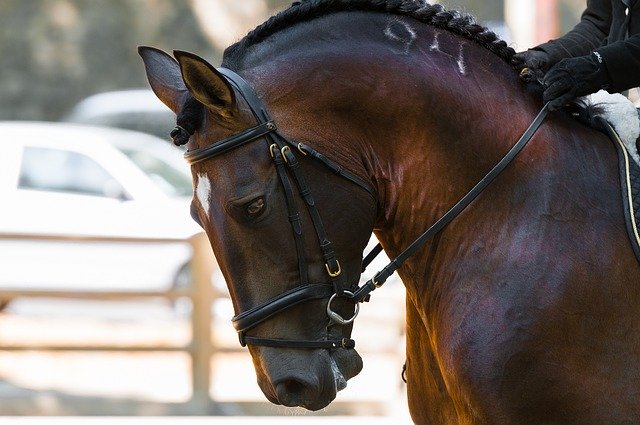
A Dutch braid is created in a similar fashion as a running braid except the hair is added to the underside of the braid instead of being added in on top of the braid. This “reverse” or underhand French braiding technique results in a raised appearance of the finished braid. It’s an eye-appealing look when a Dutch braid is well crafted, especially when positioned close to the crest which accentuates the arch of the neck.
Double Dutch Braid
A double Dutch braid is completed on each side of the horse’s neck at the crest. To create this braid, you first part the mane down the center, so one section of mane falls on each side of the neck. Then use the exact same braiding technique as the Dutch braid above to create a double Dutch braid on each side of the neck.
The double Dutch braid gives a super fancy look in the show ring. It’s unique feature is that it’s visible from either side of the neck, so it flatters your horse no matter what direction they’re tracking. This braid is a great option to choose when your horse has a thick mane.
Reverse Scallop Braid


A reverse scallop braid is the perfect braid to create on a mane that’s too long for (short mane) button braids, but not long enough for a running braid. This braid looks like button braids from the side view, but features three-strand braids scalloping across the top of the neck from braid to braid. If you’re looking to create stunning turn out of your horse without shortening the mane, this braid might be the best choice.
To create a reverse scallop braid, start braiding at the horse’s poll. Braid down a section of mane in a three-strand braid that’s long enough to be pulled through the crest and scallop over to the next braid. Then the scalloping braid is pulled down through crest of the neck at the second braid. The braids are tied and secured as you work your way across the neck.
Continental Braid
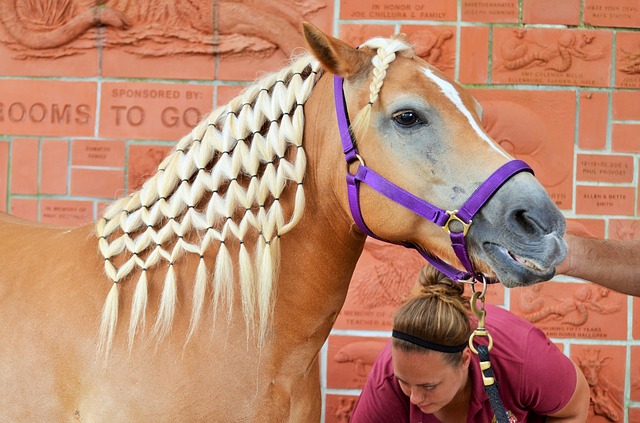
The continental braid is fun to craft and anyone can create it. To start this braid divide the mane into hair sections and band them together. Next, divide the hair sections and combine each one with a neighboring section Then re-band them together. Repeat this process down the length of the mane.
You can add embellishments to the continental braid wherever it is bound together. So get creative by adding flowers, etc. to the braid for fun shows or special occasions.
Four-Strand Braid
Four-strand braids are most often seen on the manes of baroque breeds such as Andalusian and PREs. This braid is constructed in a similar manner as a running braid, but uses four hair strands instead of three. This braid has a significant advantage over running braids because it’s sturdier and so it doesn’t fall out as easily.
Long Mane Button Braids
Savvy riders can also create button braids on a long mane for dressage shows. This is accomplished by sectioning four-fingers width of mane and creating a three-strand braid just long enough to be turned under to form the button. The braid is then tied off and turned under and the length of the loose mane (below the braid) is twisted until it can be pulled up through the base of the braid at the crest. The length of loose hair that’s pulled through the crest becomes part of the next braid. So one braid is completing at a time. And this process is continued across the neck until all of the mane is braided. Long mane button braids are a clever solution for riders who prefer the look of button braids, but want to keep their horse’s mane long.
Show Jumpers
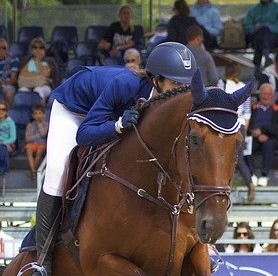
Horses competing in jumper classes are judged solely on their performance, not on their appearance. So jumpers don’t have to be braided for the show ring. But jumpers are sometimes braided because of the tradition of mane braids identifying an exceptional horse. Jumper braids can be created with yarn and finished as hunter braids or rosette braids. Another option is to secure each braid with an elastic band as the mane is braided down. Next, the three-strand braids are rolled under and fastened in place with a second band.
Draft Horses
A braided “mane roll” that features colorful ribbons and added rosettes is proper turn out for a draft show horse. The entire mane can be braided into the roll or only the top portion of the mane is braided and the remainder is left down. A braided tail tied up in a bun is also part of draft horse turn out.
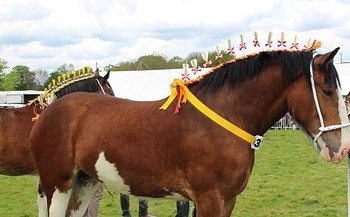
Saddlebred or Tennessee Walking Horses
A long mane with only a forelock braid and a single braid completed near the horse’s poll are proper show turn out for a Saddlebred or Tennessee Walking Horse. The forelock braid is tucked inside the browband of the bridle and positioned to one side of the forehead. Both of these signature three-strand braids are left down and feature vivid-colored ribbons with v-shaped ends.
START BRAIDING MANES
Ready to start braiding manes? You’ll need some basic tools and supplies to get started. You can either gather your own tools or purchase a complete braiding kit. If you decide to gather your own tools, download the checklist of braiding tool and supplies for braiding from my resource library. Click here to get Instant Access to the library for Free.
Here’s what you’ll need to start braiding manes:
Mane Preparation Tools
- Metal pulling comb for thinning the mane.
- A dull clipper blade (T-85 or size 10) for shortening the mane and tapering the hair ends.
Mane Braiding Supplies
- Yarn matching the mane color that you can’t break. I love and use Red Heart Classic Yarn.
- Elastic bands and/or waxed thread in mane color (optional for dressage braids).
Mane Braiding Tools
- Stiff brush and small bucket of water to organize and wet the mane.
- Two duck bill clips made of metal and slightly pointed for the best results.
- Latch hook tool available at craft stores.
- Scissors on a lanyard with a Velcro closure for safety reasons.
- Forelock tool – You can create this handy tool in minutes. See my DIY forelock tool tutorial.
- Seam ripper for removing braids.
- Embroidery or darning needle with a large eye for creating button dressage braids.
- A two-step stool with a wide top step so you can stand flat-footed for less fatigue.




Organize Your Braiding Tools
To braid efficiently, you need to have all your braiding tools at your fingertips so that you don’t have to get down off of your braiding stool each time you need a tool. If you purchase your own tools, you can put them in a braiding organizer that has fitted pockets and slides onto your belt. This organizer comes with a bag to store the kit and keep everything clean when not in use.
Complete Mane Braiding Kits
If you decide to purchase a braiding kit, look for one with sturdy tools and a storage bag. The Brilliant Mane Braiding Kit below has custom storage pockets and includes the tools you need for braiding. It slides onto your belt and sits at your hip while you’re braiding. When you finish braiding, the kit folds in half and slides into a matching bag for convenient storage.
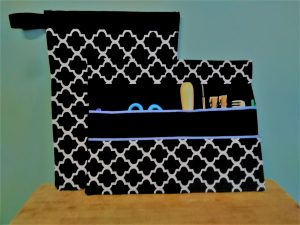
The Brilliant Mane Braiding Kit comes with tools and a matching bag for storage.
HOW TO PREPARE THE MANE
If your horse has a long mane and you plan to create a running braid or similar variation, skip the mane preparation steps I discuss below for short manes. Be sure to read my tips on Mane Cleansing below.
Short Mane Preparation
For hunter braids, eventing knots and dressage button braids on short manes mane preparation is key. Because braiding an unprepared mane is like trying to stay on a diet with junk food all around you. It’s just plain difficult.
Why?
Because the condition of the mane is the foundation of your braids. Realize that braiding an unprepared or poorly prepared mane will cost you extra time and negatively impact your results.
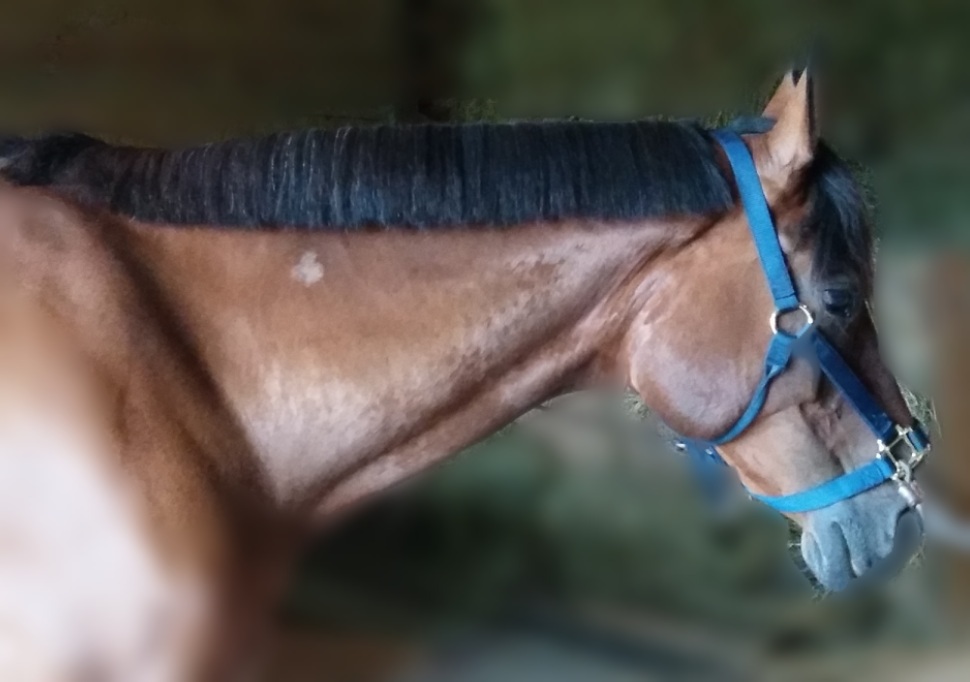
This photo shows a well-prepared mane that’s ready for good, fast braiding.
Basic Mane Preparation Steps
A well-prepared short mane has an even thickness from poll to withers and is approximately four-to six-inches long with tapered hair ends. You can learn all about mane preparation and how to properly shorten a mane in the post titled, How to Avoid Poor Mane Preparation so Braiding is Easier. But here are the basic steps for preparing a (short) mane for hunter, eventing or dressage braids.
1. Determine Mane Type
First, determine the mane type. Is the mane thin, thick or average? The key is to customize the next two steps of your mane preparation to your horse’s mane type. To learn more how to determine mane type, click the link to the post I just mentioned above.
2. Even Up Mane Thickness
Second, pull the mane to an even thickness from poll to withers (if needed, thin manes are never pulled). “Pulling” is an equestrian term used to describe the act of thinning a mane. It’s done by removing small amounts of hair from thick mane areas so the mane is more manageable to braid. While it sounds dreadful, most horses don’t mind it. But some horses are sensitive and dislike mane pulling. So the best thing to do is change your approach and use a different technique. Learn about painless mane pulling for sensitive horses in my post titled, How to Pull a Mane Without a Battle.
3. Shorten Mane and Taper Hair Ends
Third, shorten the mane to four- to six-inches long and taper the hair ends. I give a range of four- to six-inches in length because the ideal length depends on the mane type you’re braiding. Tapering the hair ends is super important to how the mane will braid. If you don’t know how to do it, it’s easy to learn. Watch the video titled, 5 Secrets for Perfect Mane Braids, in the Free resource library. Get access here.
Expert Advice: Never cut the mane or create blunt ends when shortening a mane. Blunt ends are the enemy of good braids because they’re nearly impossible to tie off at the bottom of the braid and tuck up into the small space at the crest. Blunt ends cause mane braids to twist. Plus, braiding a blunt mane is really hard on your hands. Still tempted to cut the mane? Learn more in the post tilted, Mane Pulling Shortcut Tools, Are They Worth Your Time?
Mane Cleansing
No matter what type of mane braiding you plan to do, wash your horse’s mane thoroughly a couple days prior to the show. Then just rinse the mane if needed. Avoid applying any conditioner or hair polish to the mane because this makes the mane slippery and impossible to braid well. If you find yourself braiding a slippery mane (i.e., coated with Showsheen), the only solution is the wash mane and then braid it.
Expert Advice: Washing the mane in advance helps the mane have a slightly tacky texture on the day you plan to braid it, instead of a slippery one. So the mane is easy to grip and braid.
BASIC STEPS TO BRAID A MANE
Here’s an overview of the basic braiding steps for short manes on hunters and dressage horses:
Step 1: Braid down the mane using either two-fingers width (hunter braids) or four-fingers width (dressage braids) for your section size. Add yarn into the braid halfway down the hair shaft and tie off the braid at the bottom with a slip knot.
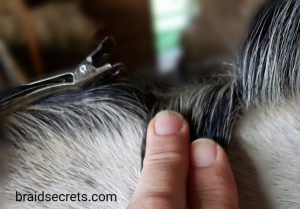
Section off two-finger’s width for each hunter braid.
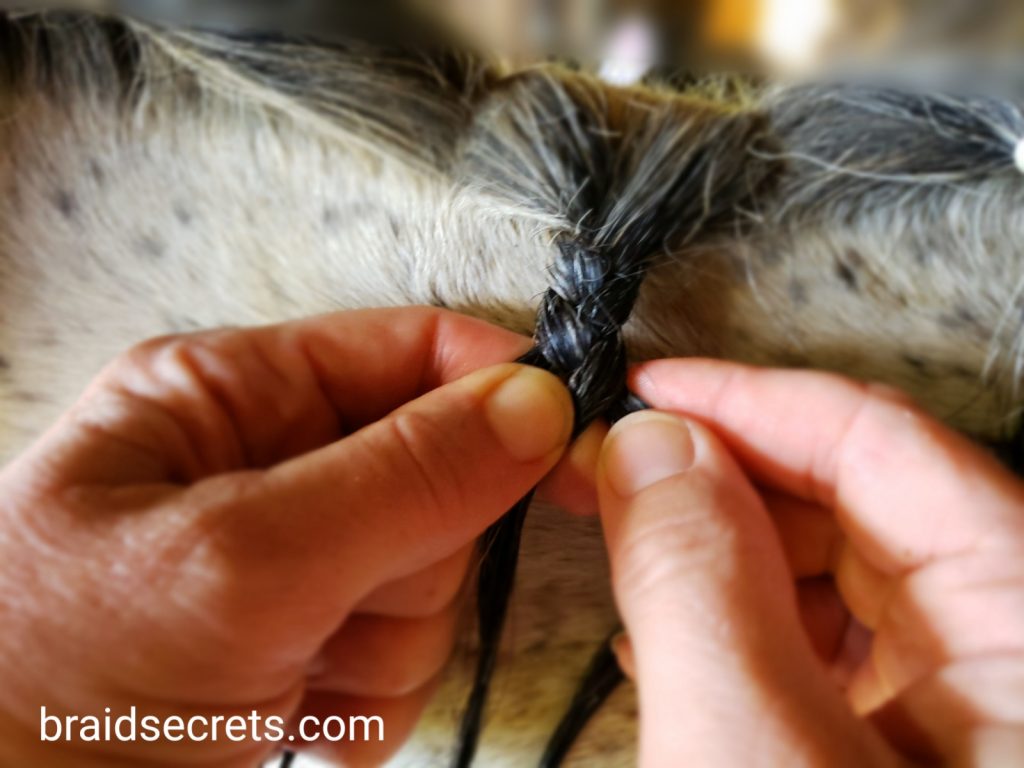
Start a three-strand braid close to the crest.
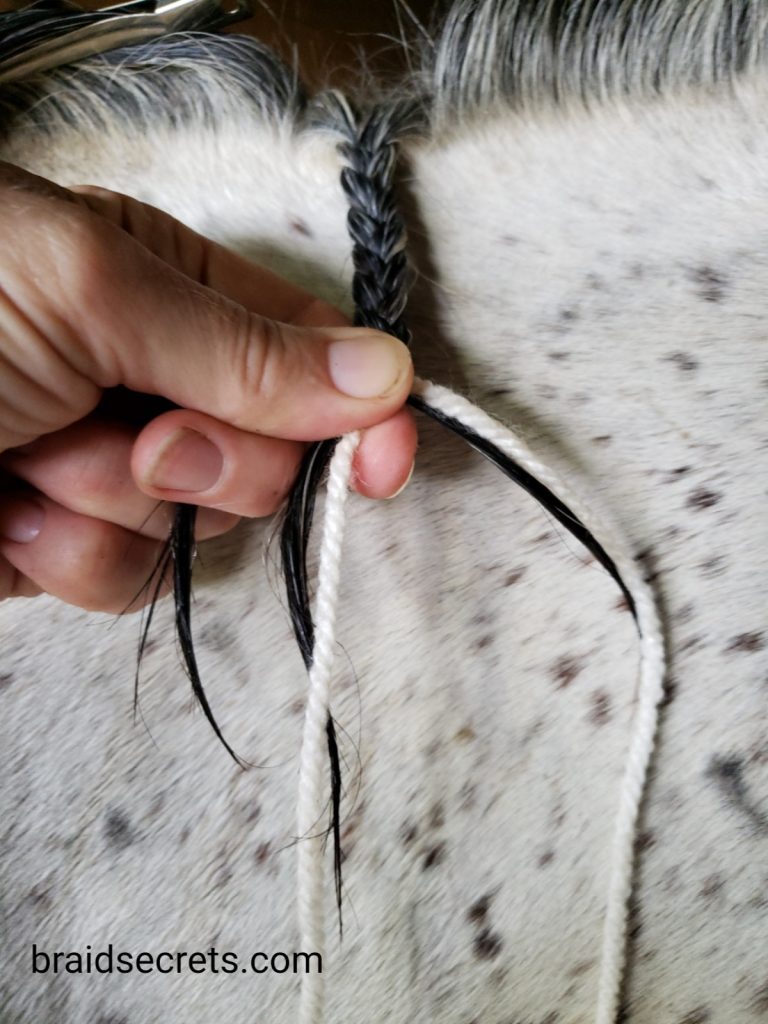
Add yarn into braid halfway down the hair shaft.
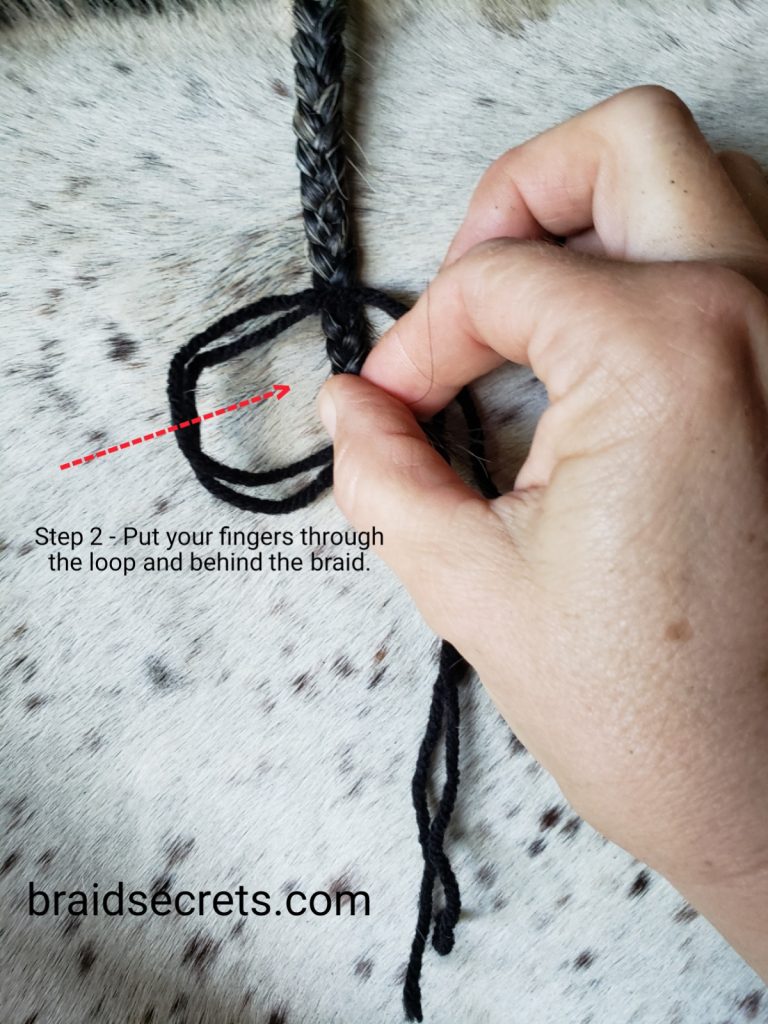
Tie a slip knot at the bottom of the braid.
Step 2: Pull all the braids up using a latch hook tool by inserting it down through top of each braid at the crest. Put yarn pieces in hook, flip the latch shut, and pull yarn pieces up through braid. Pull bottom knot of braid up into crest.
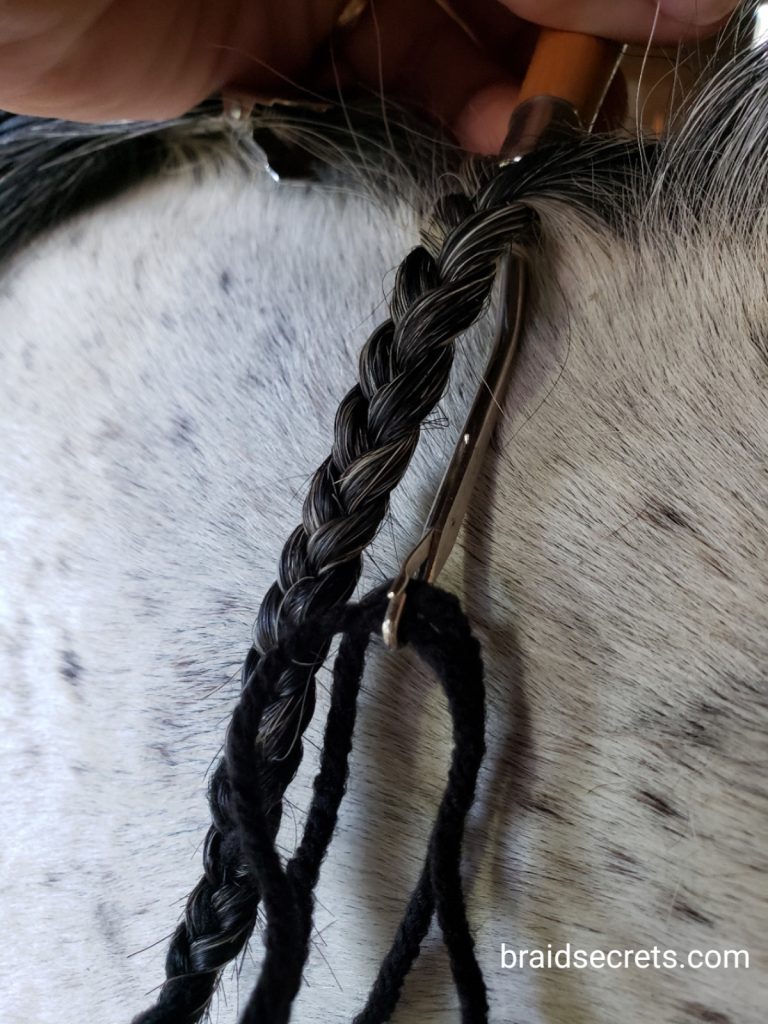
Use latch hook to pull yarn pieces up through crest.
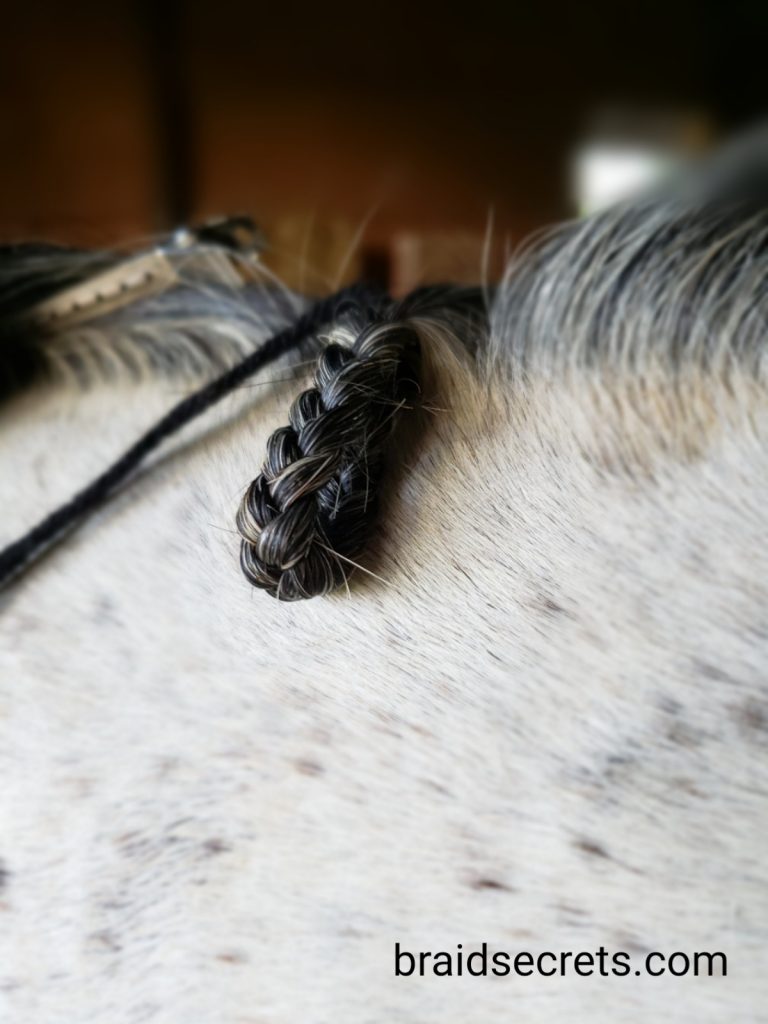
Pull bottom braid knot up just inside the crest.
Step 3: Tie down each braid with a surgeon’s knot for hunter braids or fold the braid under in half and sew in place for each dressage button braid (one method).

A hunter braid tied with a surgeon’s knot.

Fold the braid under to form the button, then sew back and forth through the braid and knot the yarn underneath the braid.
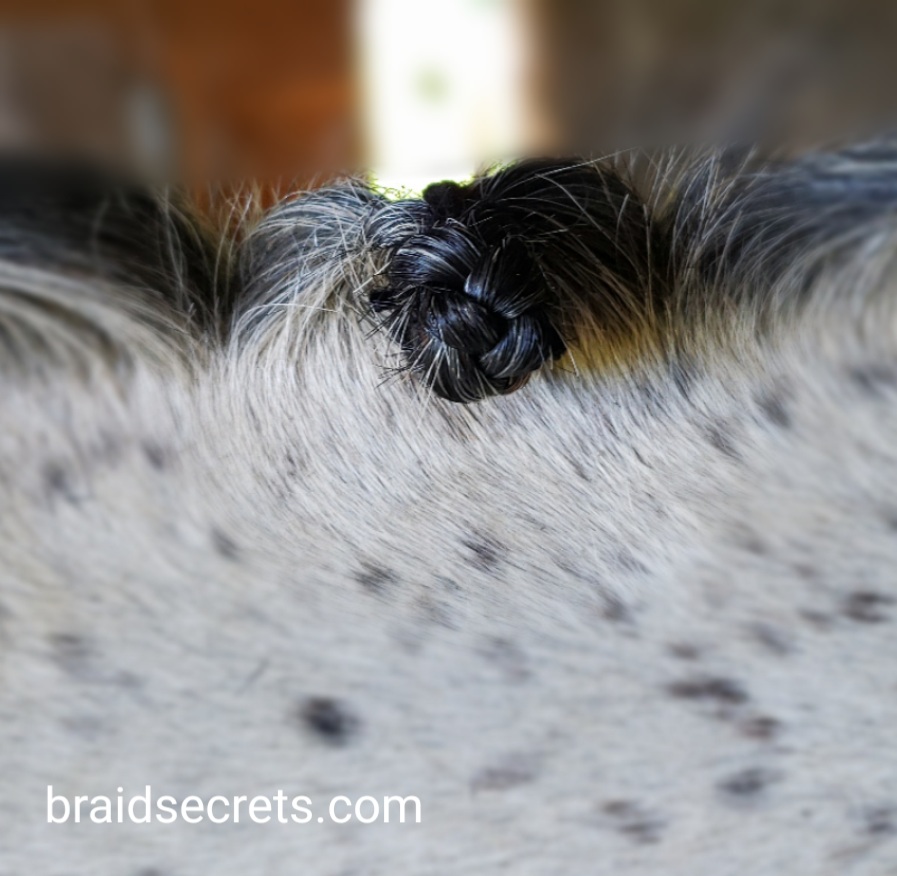
What Matters Most When Braiding Manes
While you need to know these basic braiding steps, it’s not where the braiding magic happens. The secret to flawless mane braiding is to learn to focus on the few things that really impact your results. To achieve this, acquire knowledge of expert techniques so that you know where to tighten and how to align the braids. Then you’ll create exquisite braids every time.
This is how you succeed at mane braiding.
You can start learning the expert techniques that result in top notch braids today. Sign up for Instant Access to my resource library of braiding videos and expert monthly tips for FREE.
HORSE MANE BRAIDING TIPS
How can you be successful when braiding your horse’s mane?
My best advice for achieving success when mane braiding is to:
1. Prepare the Mane
Prepare the mane for braiding when working on short manes such as for hunter or dressage button braids. Professional braiders are mane preparation wizards since it makes a mane faster and easier to braid and get perfect results. You can steal these secrets by learning how to prepare a mane for good, fast braiding.
My recommendation is to learn how to: (1) customize your mane preparation to the mane type (thin, average, or thick). (2) Pull the mane to even out mane thickness (if needed, don’t pull a thin mane), and (3) shorten the mane to the right length while tapering the hair ends so the mane braids with ease.
2. Learn Expert Braiding Techniques
You don’t have to be a professional rider or braider to learn expert braiding techniques. Most equestrians learn to braid a mane from a friend at the barn. This can set you up for braiding struggles because limited knowledge is what lowers your braid quality and slows your speed. There are many faucets of mane braiding that when combined, will elevate the quality of your braids. That’s why it’s so beneficial to acquire braiding knowledge from an expert. It will help you help you avoid frustration and disappointment. Instead, you’ll achieve your best braids ever in less time.
3. What You Focus On Matters Most
What you focus on while braiding matters the most. Learn to focus on the key things that get results when braiding a mane. Simply knowing the basic braiding steps is good start, but it’s not what will get your the great results you’re looking for. You need to know what to focus on each step of the way when braiding to achieve those perfect results. Then you’ll be able to plan and create flawless braids every time.
4. Practice Short Braiding Sessions
Practice expert techniques in short braiding sessions until they become familiar to you and you’re getting good results. The point is you don’t have to eat the whole elephant at once (i.e., braid the entire mane) in order to improve your braids. Put in a few practice braids twice weekly and focus on braid quality.
FREQUENTLY ASKED QUESTIONS
What Side Do You Braid a Mane On?
Hunters manes are always braided on the right side (also called the off side) of the horse even when the mane naturally falls to the left. You can braid the mane on either side of the neck for other riding disciplines. In this case, I recommend braiding the mane on the side it naturally falls to.
Is it Bad to Braid a Horse’s Mane?
The best practice for most horses is to unbraid the mane daily when showing. This helps to preserve the hair by preventing breakage. It’s especially important to unbraid a mane daily when a horse has a thin mane and shows frequently. This helps to preserve the mane for the entire show season.
Expert Advice: The top of the braid at the crest shouldn’t be so tight as to cause hair loss or be uncomfortable for the horse. Only the core of the three-strand braid needs to be tight for the braids to look neat.
Some equestrians put preservation braids in a long mane or tail to prevent tangling and protect the hair from ice which can cause breakage. This is be an effective hair preservation strategy, but it has one draw back. If the braid gets caught on something in the stall (i.e. hook for the water bucket, etc.) or during turnout, then the horse can lose a significant portion of their mane. I have seen it happen. Some riders use a running braid to protect a long mane during daily riding and removed it afterward.
TAKEAWAYS: BRAIDED HORSE MANES
Whether you learn to braid a mane for horse shows, to preserve the hair or just for fun, my recommendation is to first acquire knowledge of the best braiding techniques so that you can be successful. This will ensure that you’re practicing quality techniques from the beginning, so that you avoid the frustration I encountered. Plus, you won’t spend years struggling to braid a mane and get disappointing results like I did. Ugh!
Instead, you”ll add a valuable skill to your horsemanship and create incredible braids you can be proud of.
Happy Braiding!
Mary Beth
P.S. I love connecting with fellow riders and horse lovers. Which type of mane braid do you want to learn? What was the most interesting or helpful thing you learned about braiding in this post? Hit reply and let me know now. You can start learning the techniques that result in top notch braids today by clicking here.

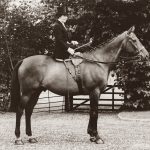
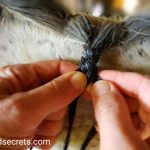
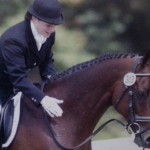
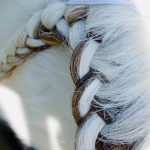

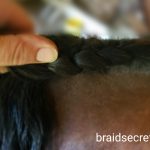
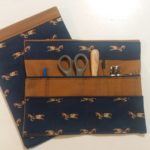
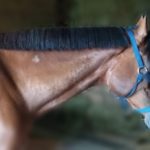
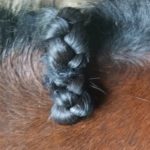
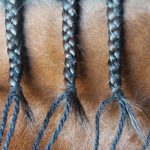
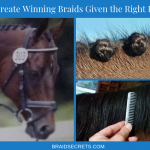
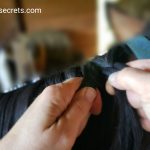
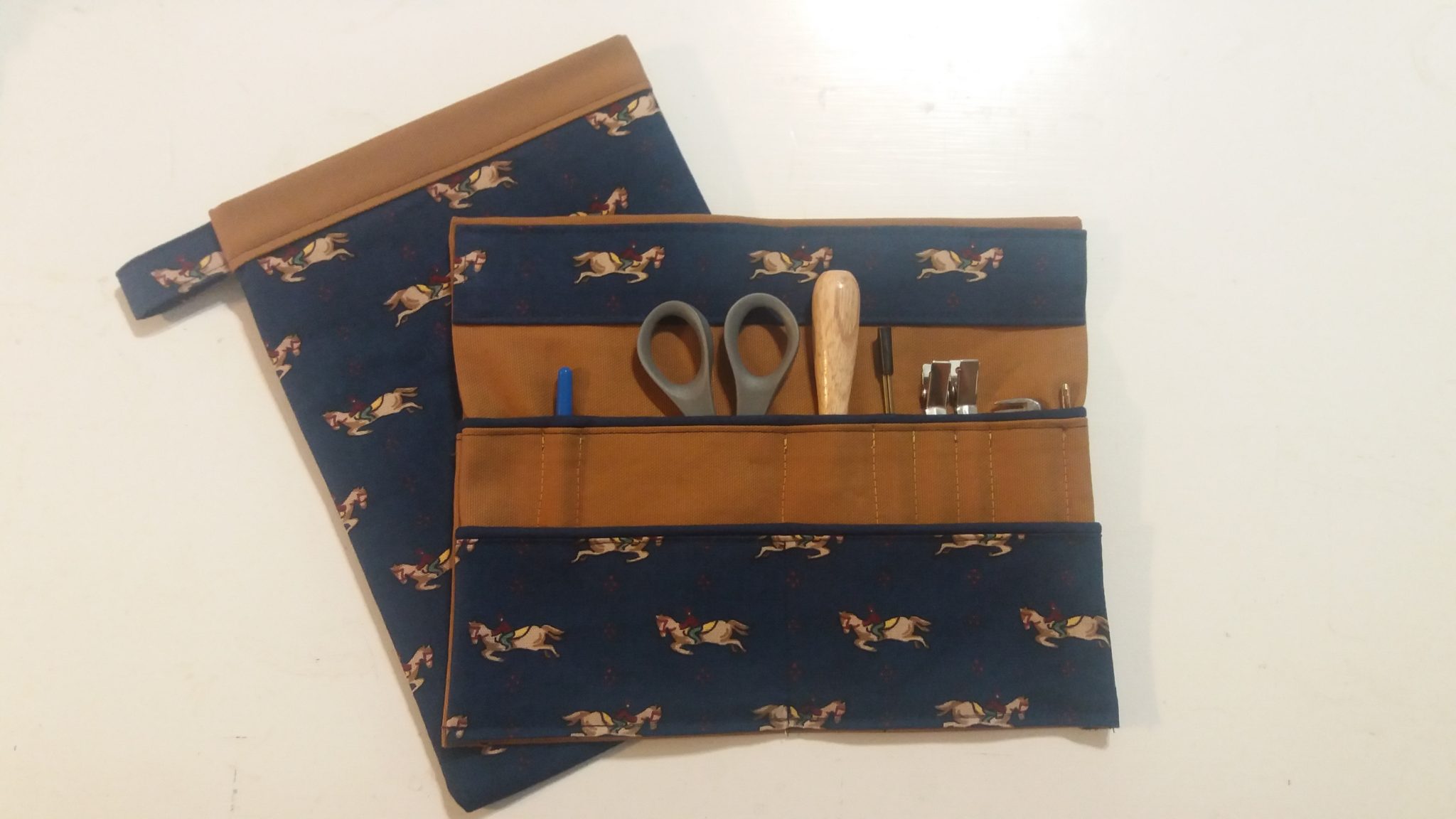
Pingback: Mane Braiding FAQ: Hunter vs. Dressage Braids